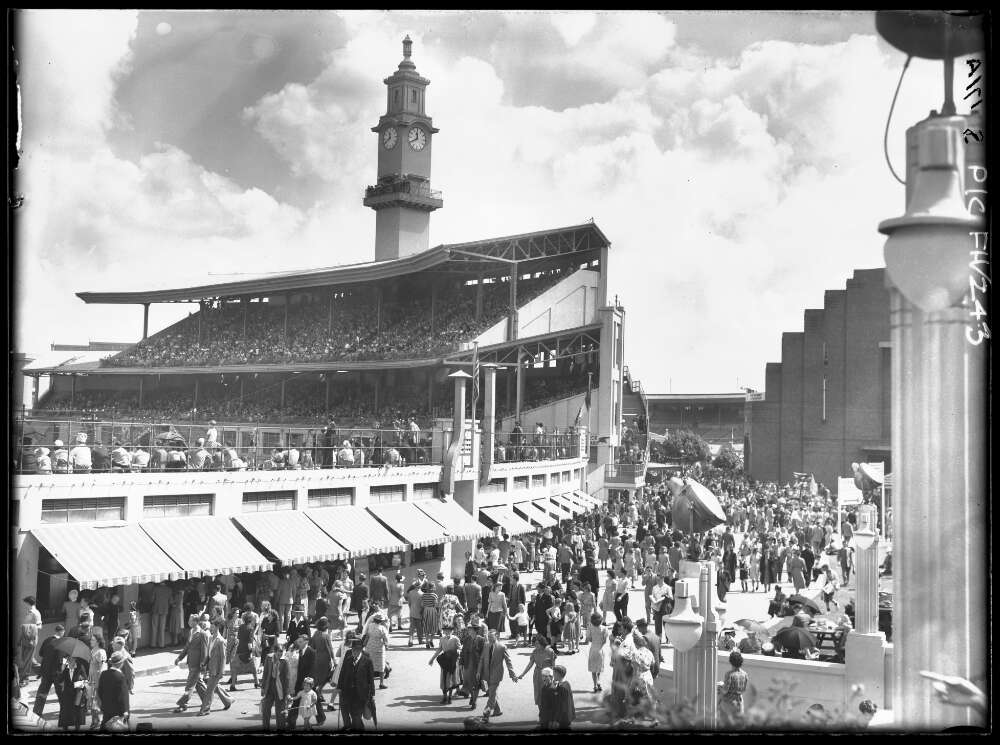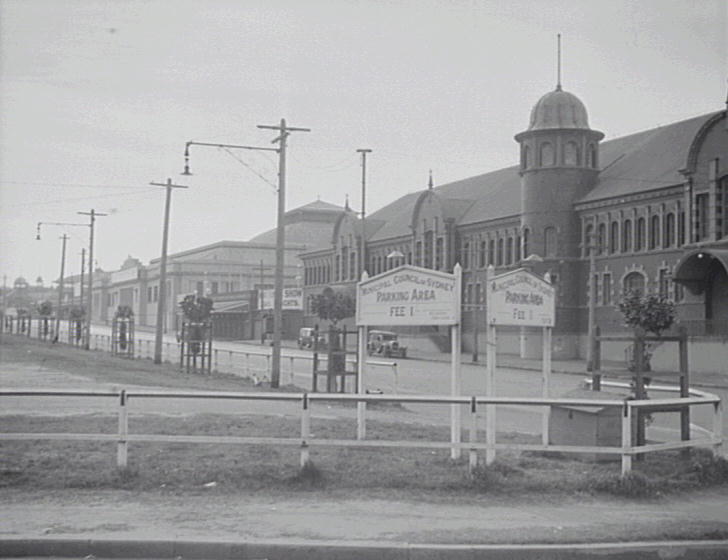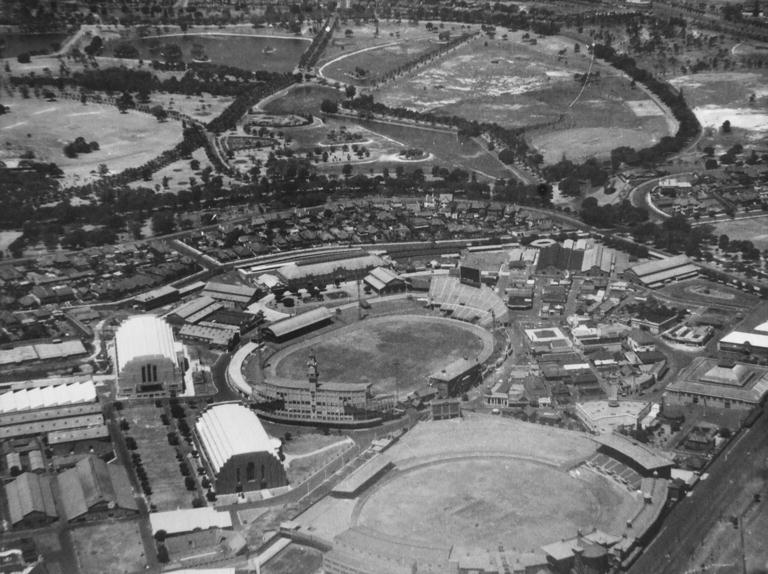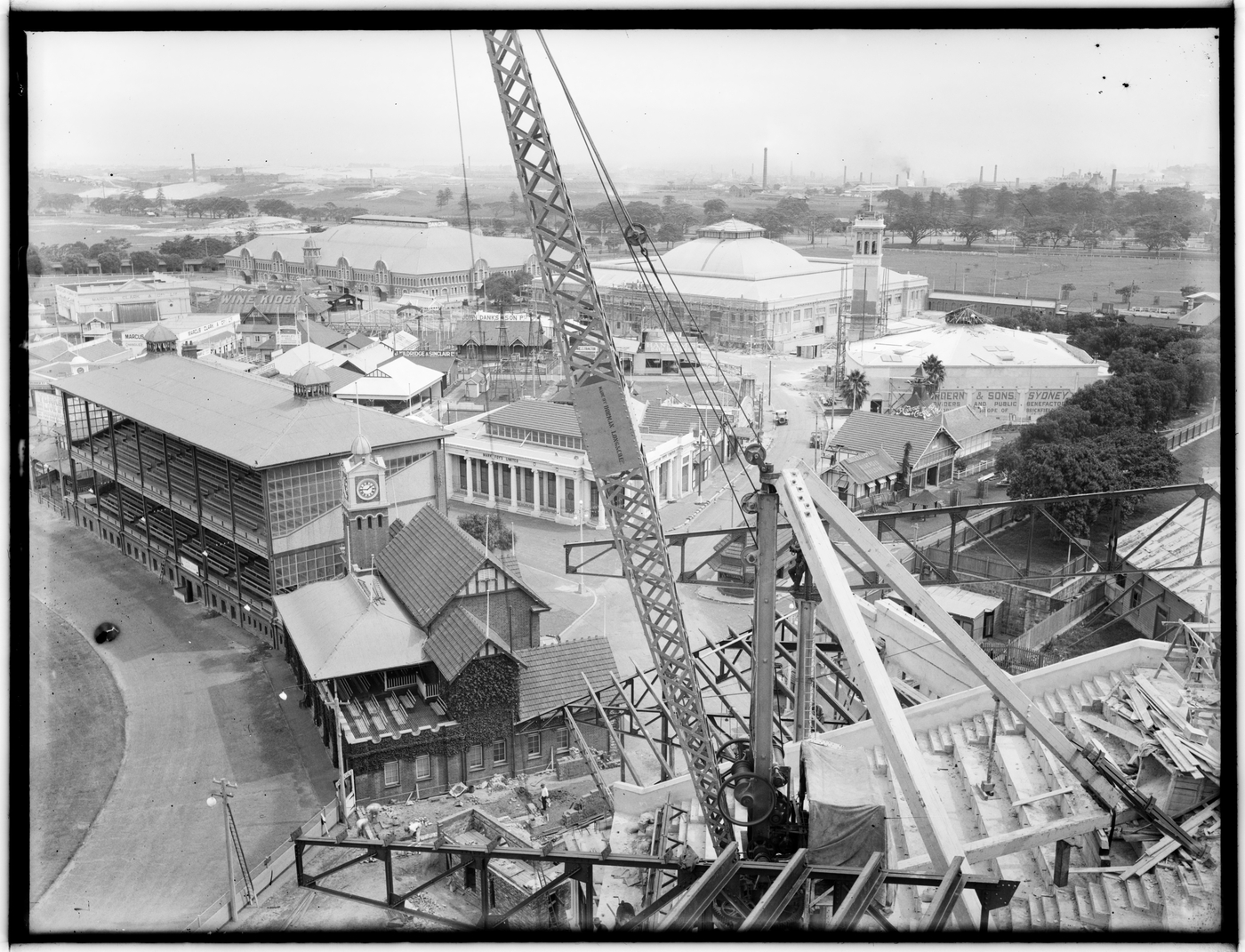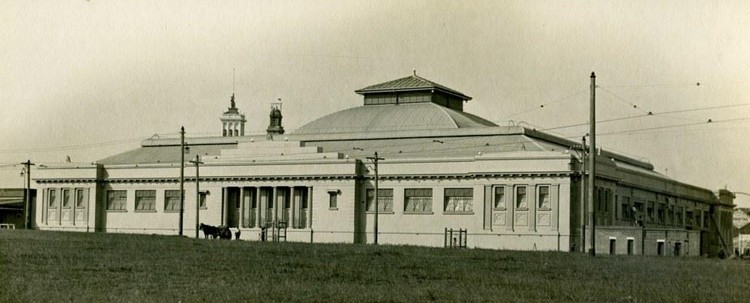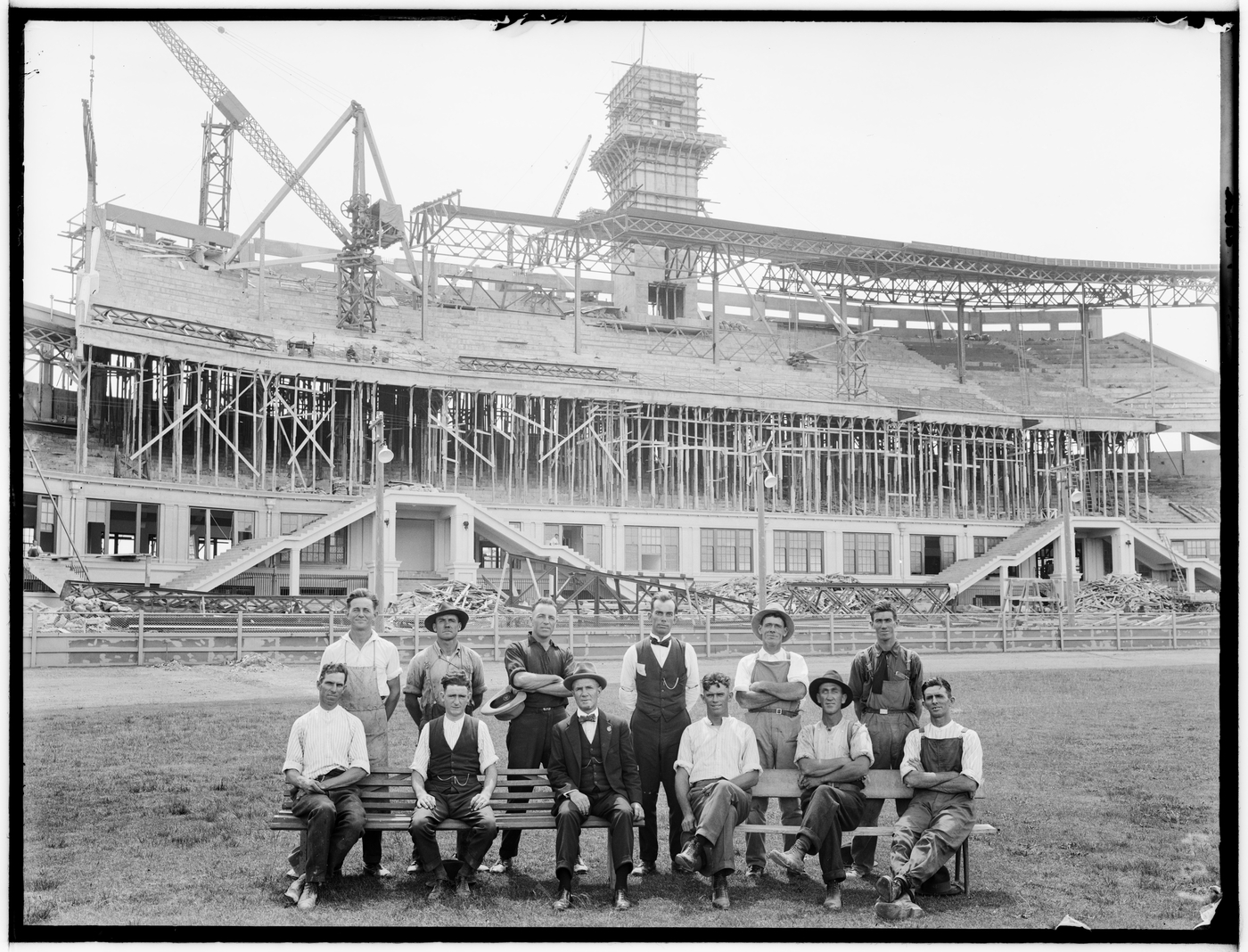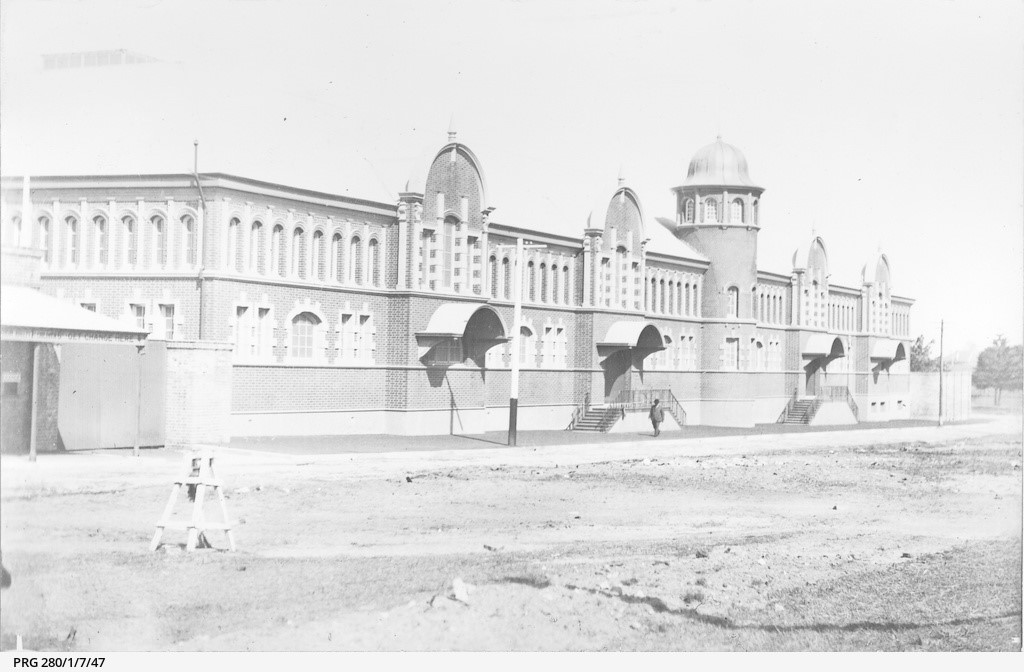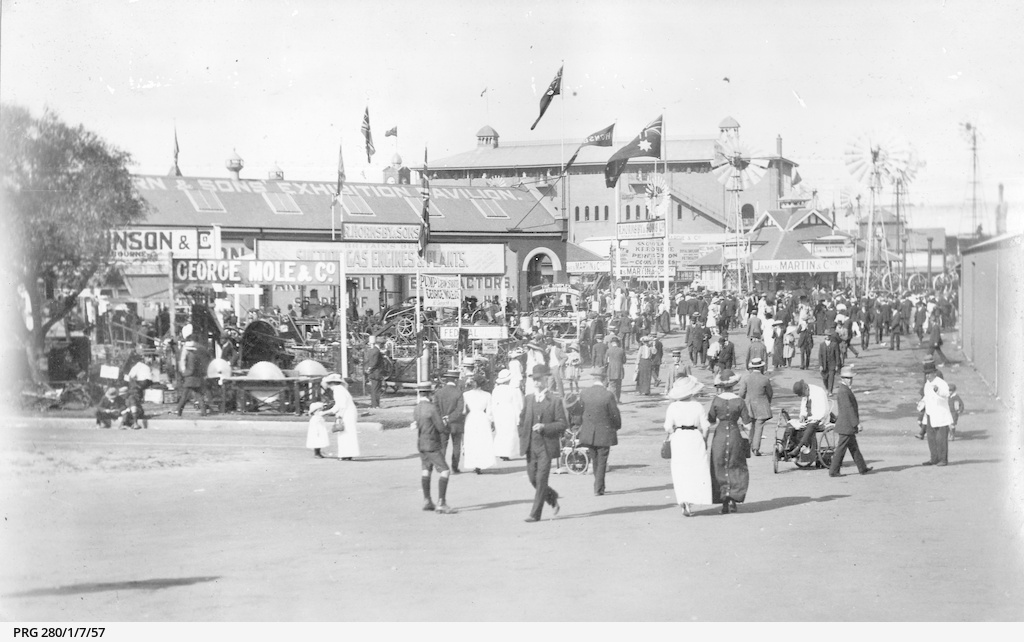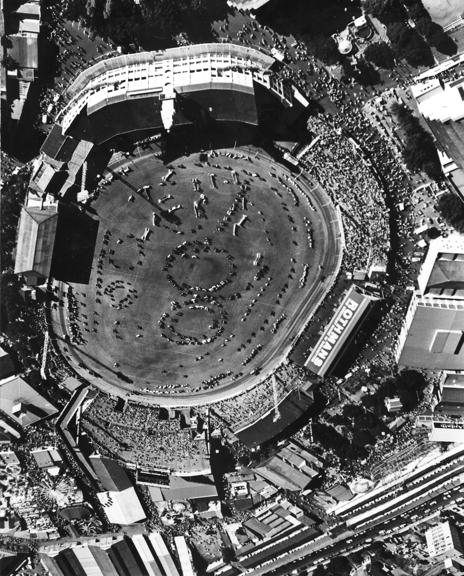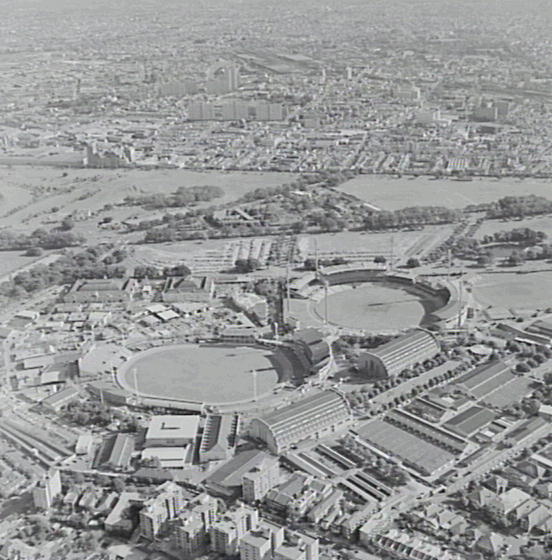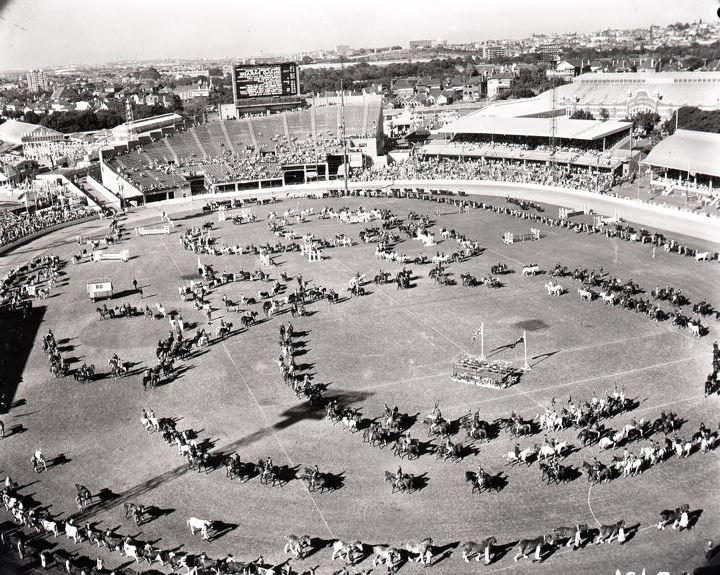Construction of the Members Grandstand, in 1924 by Arthur Ernest Foster. Taken on what is now called the Showring. Image credit of Mitchell Library, State Library of New South Wales
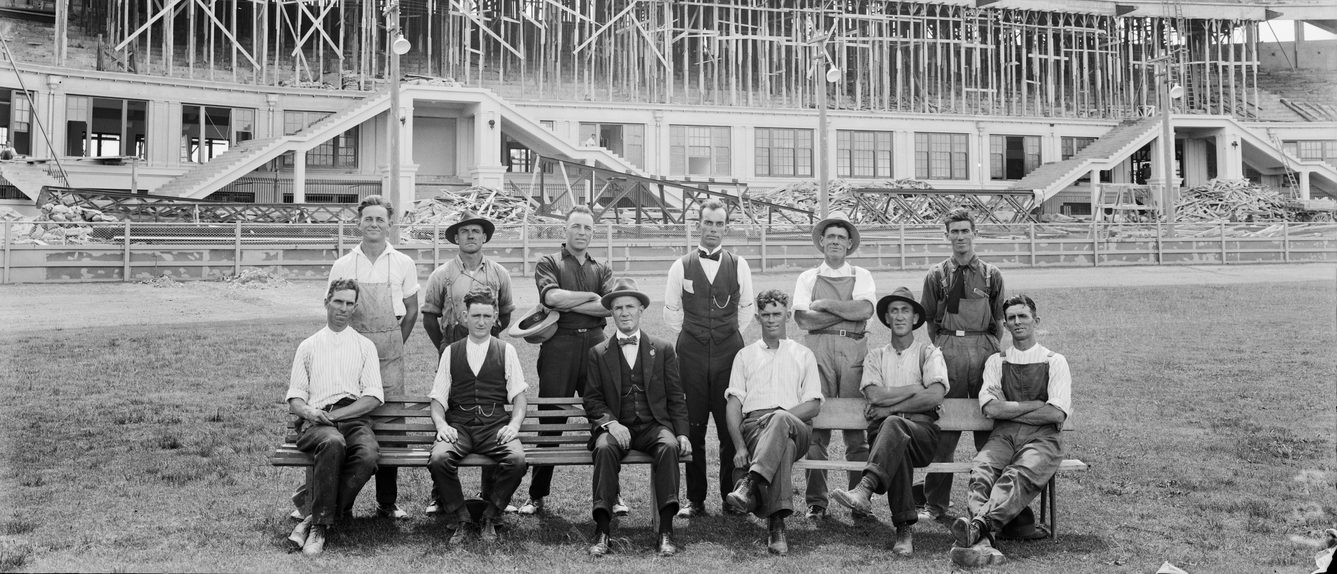
EQ History
Acknowledgement of Country
The Entertainment Quarter acknowledges the Gadigal People of the Eora Nation, the traditional custodians of this land, and pays its respects to Elders both past and present.
History of the Entertainment Quarter
In the early 1800s, after only a short period of European settlement, Sydney Town was already cluttered with buildings and over-crowded, and it was clear the residents would need somewhere outside the city to graze their livestock. So in 1811, Governor Lachlan Macquarie selected a large area of land with sandy soil and swampy patches, and called it Sydney Common. (On today’s map, that area would include Centennial Park, Moore Park Golf Course, ES Marks Athletics Field, Randwick Racecourse and the entire Moore Park precinct.)
The cattle were happy; the city-dwellers were happy. All was good – until it was discovered that the Tank Stream, Sydney’s main water supply, had become polluted. With desalination technology still a long way off, the city needed to find a new natural water supply and it looked to the lagoons and marshes around Sydney Common (renamed Lachlan Swamp).
In 1837, local engineer John Busby designed an underground aqueduct to deliver water from Lachlan Swamp to Hyde Park. He dammed the lagoons and damned his slow convict workers, and set his name in stone by building Busby’s Bore. You can still find above-ground troughs and fountains along the course route today. From here on, the land around Lachland Swamp became less and less “common”.
In 1833, NSW Governor Richard Bourke sectioned off some of the land for use as a racecourse. (Until then, Hyde Park had been the main racing venue for the city). The Australian Jockey Club was given the racecourse in 1863, merged with the Sydney Turf Club in 2011, and was given the official thumbs up from the Queen for the racecourse to become known as it is today – Royal Randwick.
By 1867, Sydney had itself a Municipal Council and they decided to carve off another chunk of Sydney Common and dedicate the land to the Mayor, Charles Moore. Named Moore Park, the land was to be developed for recreation and this was initiated with the planting of Moreton Bay Fig trees and Monterey Pines. Those trees are now large monuments and signature features of the Moore Park area.
While the flora was flourishing there was little in the way of fauna until 1879 when a Zoological Garden was established, boasting among its collection an elephant donated by the King of Siam. However, the zoo was plagued by bad luck and an actual plague – Bubonic to be specific. A kangaroo found to be afflicted with the contagion caused the zoo to be shut down and buildings within it burnt. Eventually a new zoo with a view was established on the edge of Sydney Harbour at Taronga Park.
To commemorate the one hundredth anniversary of European settlement, in 1888 a large tract of land was sectioned off as a nature reserve and called Centennial Park. It was within a specially built pavilion in this park that, on January 1, 1901, Lord Hopetoun was sworn in as the first Governor General of the freshly federated Australia.
Arguably, the organisation that had the most influence on the look and character of Moore Park is the Royal Agricultural Society of NSW (RAS). It established the Showground and held its first exhibition in 1882. The exhibition was a showcase of produce, art, craft, machinery and display of talent and skills (including woodchopping, equestrian, and whip cracking) that became known as the Royal Easter Show, an annual event still firmly fixed on the Sydney cultural calendar. “The Show” grew in size and duration until it outgrew the venue and relocated to Sydney Olympic Park in 1997.
During times of the year when it wasn’t Easter, the Main Arena, known as The Showground, hosted other major events. It doubled as the Sydney Showground Speedway from 1926 − 1996, drawing large crowds to watch motorcycle, speedcar, and stockcar racing, demolition derby, and daredevil displays.
In 1998, the former Sydney Showground at Moore Park became the home to Fox Studios Australia and Fox Studios Backlot was purportedly based on Universal Studios Hollywood, Universal Studios Florida, and Disney’s Hollywood Studios. The $261 million park opened on 7 November 1999. An adjacent precinct provides restaurants and cafes, a retail complex, parklands, entertainment venues, and sporting facilities. The adjacent precinct was previously known as simply ‘Fox Studios Entertainment Precinct’.
The backlot closed down in 2001 and continued as the Events and Entertainment Precinct that it is today – and became “The Entertainment Quarter”.
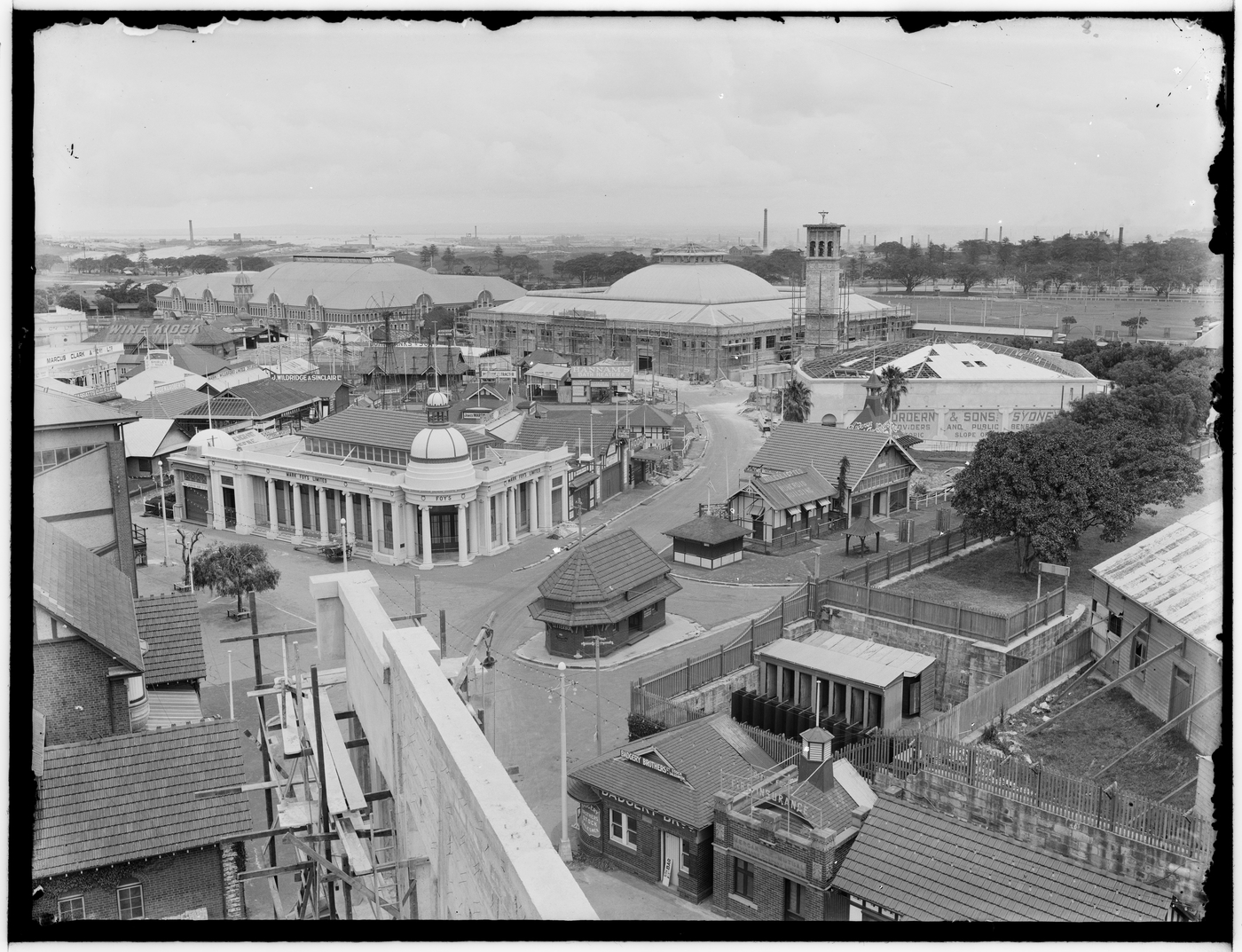
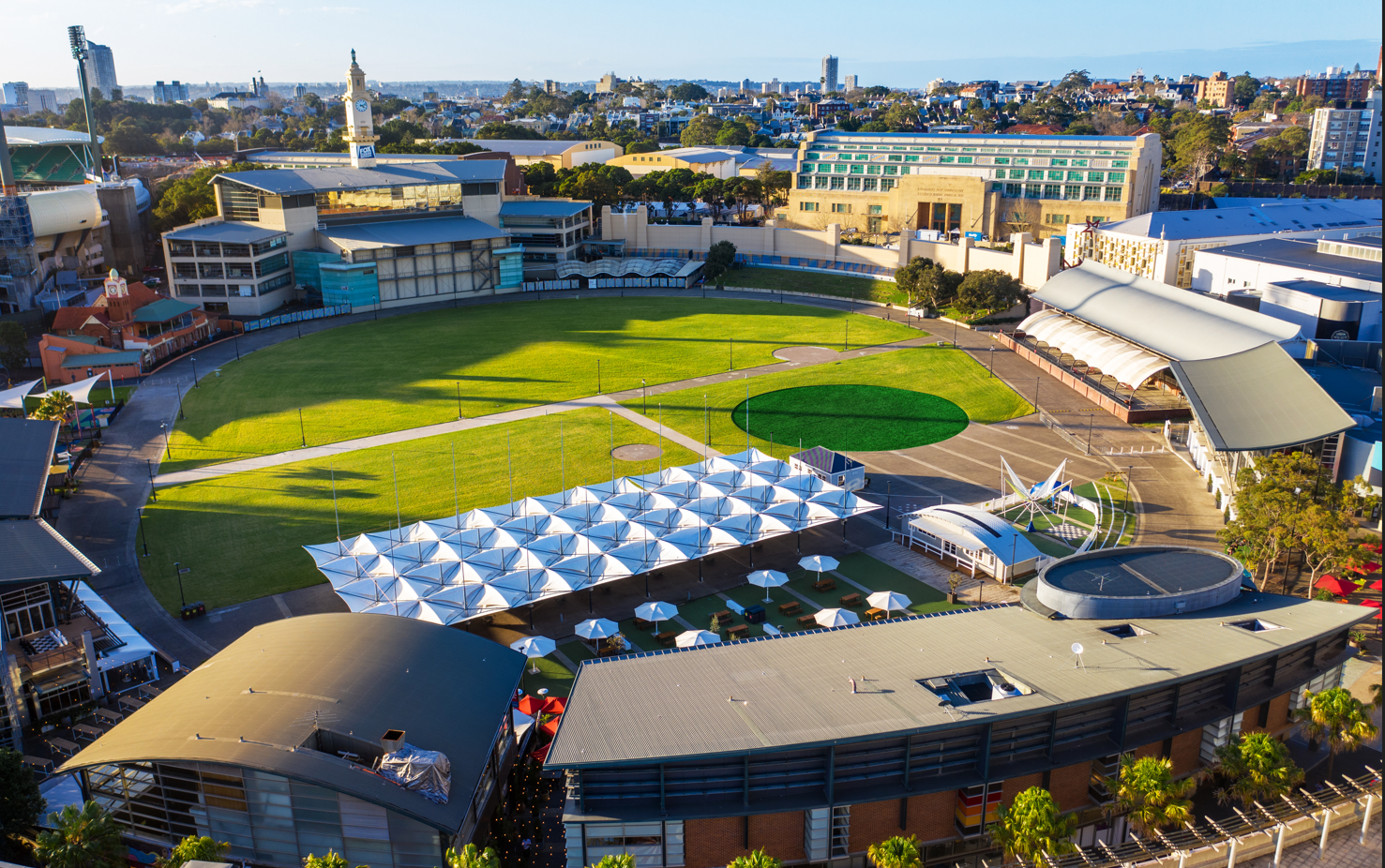
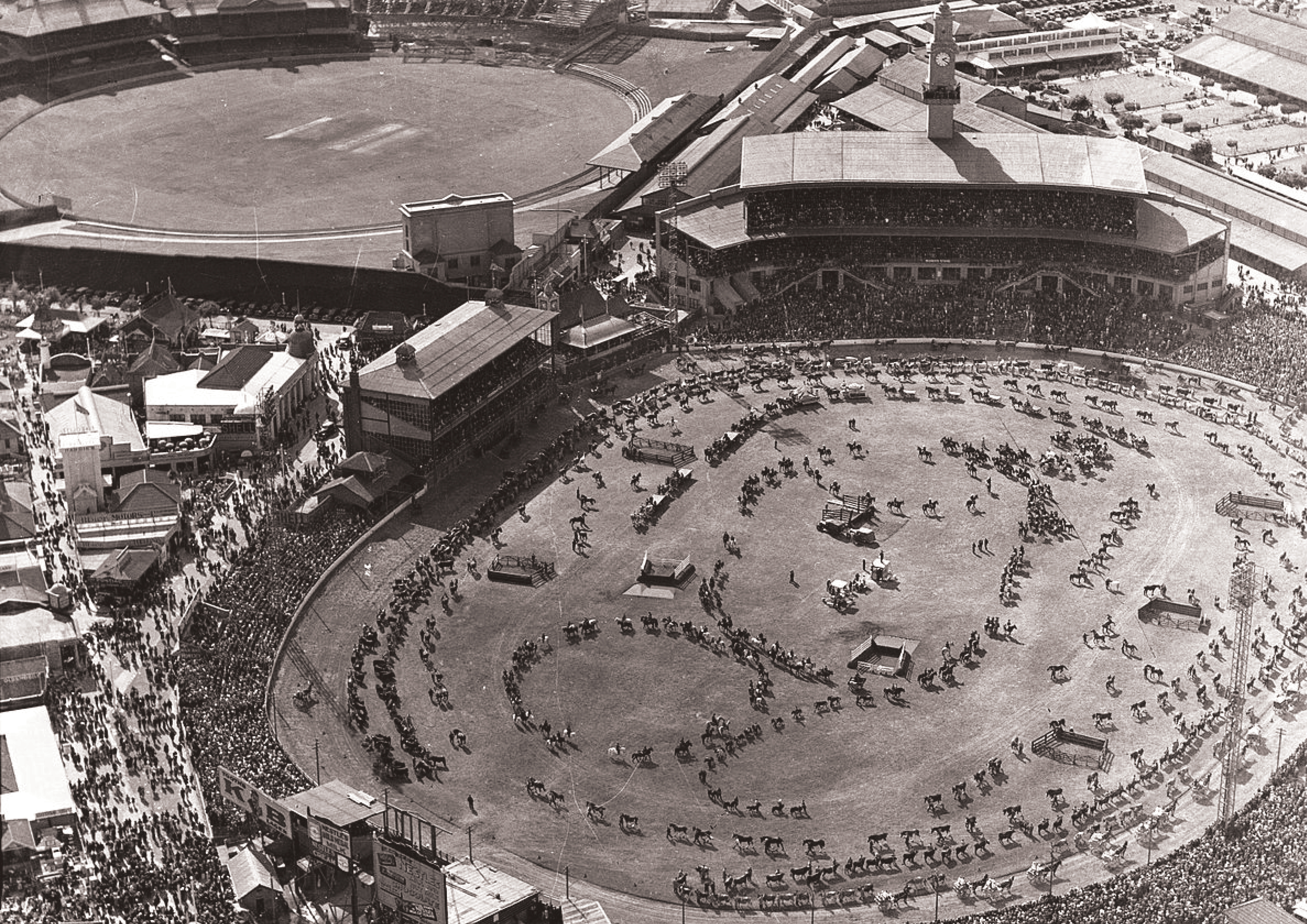
FUN FACTS:
The first official NSW Rugby League Premiership game was played at the Showground – NSW vs New Zealand in 1907 (NZ won). Rugby League grand finals were played there until 1987. The first Ashes Test Cricket match in Australia was played there in 1883 and the infamous World Series Cricket was forced to stage its first match there in 1977. It later became the favoured outdoor venue for stadium style concerts and hosted shows by, among others, Led Zeppelin, ABBA, David Bowie, The Police and KISS.
The Sydney Cricket Ground (SCG) began life as a flat oval but by 1882 it had two grandstands, The Brewongle Stand and Member’s Stand. By around 1920 it resembled the grounds we recognise today. The immortal Sir Don Bradman drew large crowds during the 1920s and ‘30s. In 1978 the rebellious World Series Cricket created by Kerry Packer, held its first match there and led to the construction of six highly luminous light towers for night cricket. The SCG is Sydney’s preeminent cricket ground.
When the RAS moved to Homebush, the Showground was redeveloped to cater for a diverse range of uses including film, television and entertainment industries.
The Hordern Pavilion was built as an exhibition space by RAS in 1924. In 1972 it was modified to accommodate various uses and became the indoor venue for live music concerts until 1983 when the Sydney Entertainment Centre opened. It then became home to rave parties including the Mardi Gras Party and Sleaze Ball. It still functioned as an exhibition hall during the Easter Shows until 1997 when it was privately purchased, renovated and once again has become a preferred venue for live music and other events.
The Royal Hall of Industries was built in 1913 and described as a treasure trove of futuristic exhibits, including motor cycles, insecticides, photographic equipment, jewellery, novelties and musical instruments. It’s colourful resume includes having been used as a morgue, dance hall, roller and ice skating rink, boxing venue and beloved Showbag Pavilion for the Easter Show. It too was privately purchased after the RAS moved and is now hired out for large functions, festivals and events.
Today, the main focus of activities around the Moore Park precinct revolves around sports, entertainment, arts, culture and lifestyle. As a key component of the precinct, the Entertainment Quarter accommodates many of those activities and provides open spaces for hire for public and private events.
